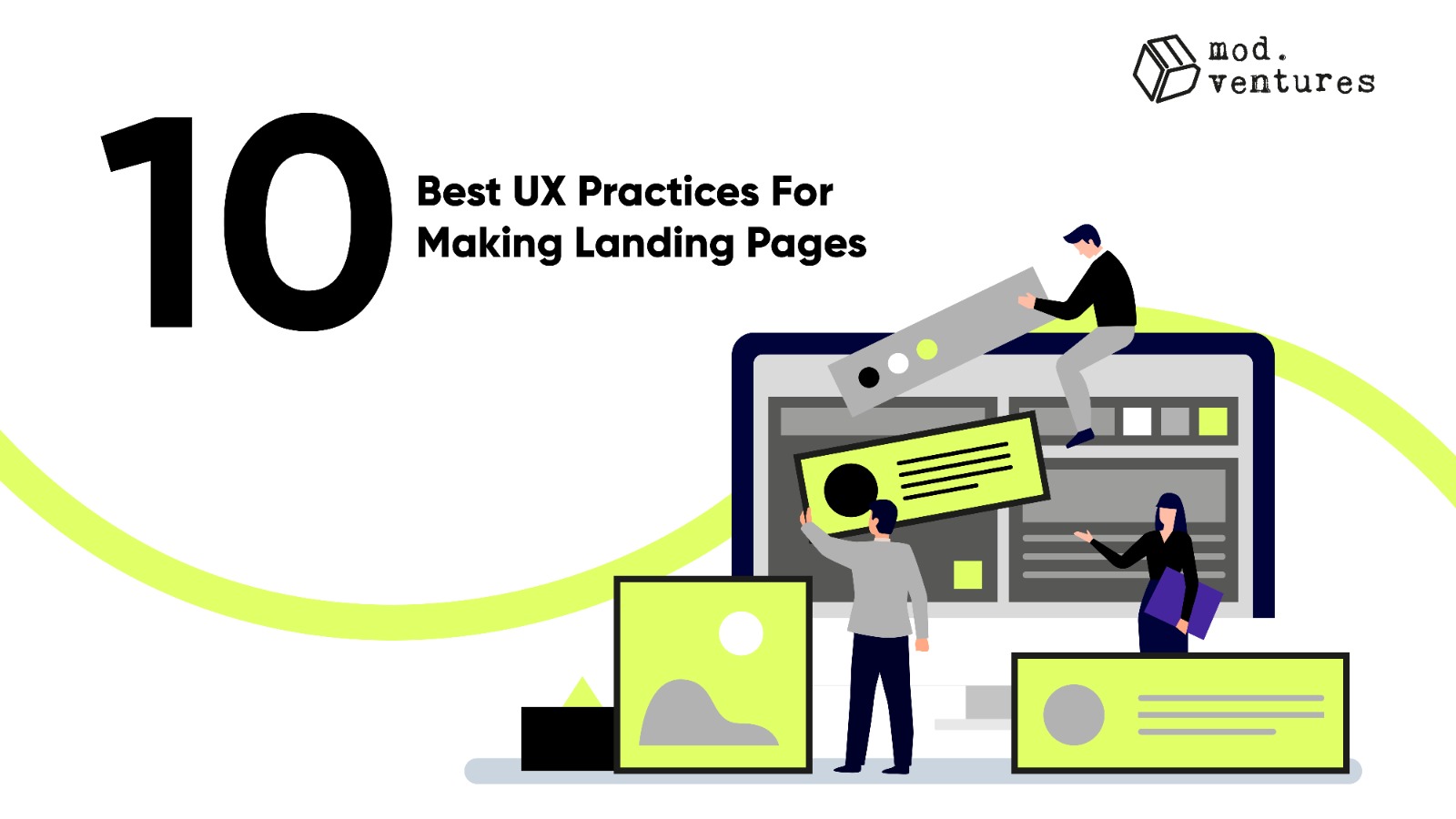10 Best UX Practices For Making Landing Pages

In the competitive digital landscape, a landing page serves as the first impression your business makes on potential customers. It is a carefully designed space that not only captures attention but also persuades visitors to take the next step—be it making a purchase, signing up for a service, or downloading a resource.
A great landing page is more than a visually pleasing interface. It combines the principles of design, psychology, and usability to deliver a seamless user experience. A well-crafted landing page can lead to higher engagement, better conversion rates, and increased customer trust. On the other hand, a poorly designed one risks alienating visitors and losing potential leads.
So, how do you ensure your landing page is not just good but exceptional? By following these 10 UX practices, you can craft landing pages that strike the perfect balance between form and function.
1. Prioritize Speed and Performance
Speed is a crucial factor in user retention. Research shows that landing pages with a load time of 0-2 seconds achieve the highest conversion rates. A slow-loading page not only frustrates users but also diminishes trust in your brand.
- Why It Matters:Fast-loading pages improve user satisfaction and reduce bounce rates.
- How to Achieve It: Compress images, use lazy loading for media, and minimize unnecessary scripts to keep your page lightning-fast.
2. Craft Headlines That Grab Attention
Your headline is the gateway to your landing page. It’s often the first thing visitors notice, and it plays a significant role in shaping their first impression. A strong, clear headline communicates your offer and its value in just a few words.
- Why It Matters: Headlines set expectations and encourage users to explore further.
- How to Get It Right: Use under 10 words, focus on the core benefit, and speak directly to your audience’s needs or pain points.
3. Write Copy That Sells, Not Overwhelms
Your landing page copy should be concise, benefit-driven, and compelling. Instead of listing every feature, focus on how your product or service solves problems for the user. Use bullet points or short paragraphs to ensure easy readability.
- Why It Matters:Overloading users with information can lead to decision fatigue and reduce conversions.
- How to Do It Well:Highlight benefits over features and maintain an empathetic tone that resonates with your audience.
4. Establish a Clear Visual Hierarchy
Design is not just about making things pretty, it’s about guiding the user’s attention. A well-structured layout emphasizes the most important elements, like calls-to-action (CTAs), headlines, and key benefits.
- Why It Matters: A clear hierarchy reduces cognitive load and keeps visitors focused on your value proposition.
- How to Achieve It:Use larger fonts for headlines, contrasting colors for CTAs, and whitespace to avoid clutter.
5. Incorporate High-Quality, Relevant Visuals
Humans are visual creatures, and the right imagery can communicate your message faster than text. High-quality images and videos not only capture attention but also evoke trust and emotions.
- Why It Matters:Relevant visuals enhance understanding and make your brand more relatable.
- Pro Tip: Use authentic images, such as customer testimonials or product demonstrations, rather than stock photos. Videos explaining your offering can also boost engagement significantly.
6. Feature Prominent Calls-to-Action (CTAs)
A strong CTA is the cornerstone of any landing page. It tells users what to do next, eliminating any guesswork. Phrases like “Download Now” or “Get Started Today” are clear and actionable, driving users toward conversion.
- Why It Matters:Vague CTAs can confuse users, while specific ones guide them effortlessly toward the desired action.
- How to Improve Them: Place CTAs above the fold and repeat them in logical places, such as at the end of benefit sections.
7. Build Trust with Social Proof
Social proof leverages testimonials, reviews, and logos of reputable clients to show visitors that others trust your brand. This can significantly reduce hesitation and establish credibility.
- Why It Matters: Trust signals reassure visitors, making them more likely to convert.
- Pro Tip:Use real customer names, photos, and ratings. Respond to reviews, including critical ones, to demonstrate transparency.
8. Make Forms Simple and Inviting
Forms are often the final step before a user converts, so they must be as user-friendly as possible. Lengthy or intrusive forms can discourage users from completing the process.
- Why It Matters:A streamlined form minimizes user effort, increasing the likelihood of completion.
- Best Practices:Limit fields to essentials (e.g., name, email) and avoid asking overly personal questions.
9. Ensure Mobile Responsiveness
With the majority of web traffic coming from mobile devices, a landing page that isn’t optimized for smaller screens risks alienating a significant portion of users. Mobile-friendly pages adjust seamlessly to different devices, ensuring a consistent experience.
- Why It Matters:A mobile-optimized page enhances usability and improves search engine rankings.
- How to Optimize:Use responsive design, and thumb-friendly navigation, and test the page across devices for usability.
10. Leverage Urgency and Scarcity
Creating a sense of urgency or scarcity can nudge users toward quicker decision-making. Limited-time offers or exclusive deals tap into the Fear of Missing Out (FOMO), compelling users to act immediately.
- Why It Matters: Psychological triggers like FOMO can motivate action and boost conversions.
- How to Do It Right:Use countdown timers or phrases like “Only a few left in stock” to create urgency without feeling manipulative. Have honest offers to build trust in users.
An effective landing page is the bridge between your brand and its audience. It’s not just about creating captivating visuals, it’s about providing an experience that informs, engages, and persuades. By combining fast performance, compelling design, and strategic UX practices, you can transform a landing page into a powerful conversion tool along with a visually aesthetic experience for your users.
Struggling to create landing pages that truly convert? Schedule a free consultation call today or fill out our form to get started!
